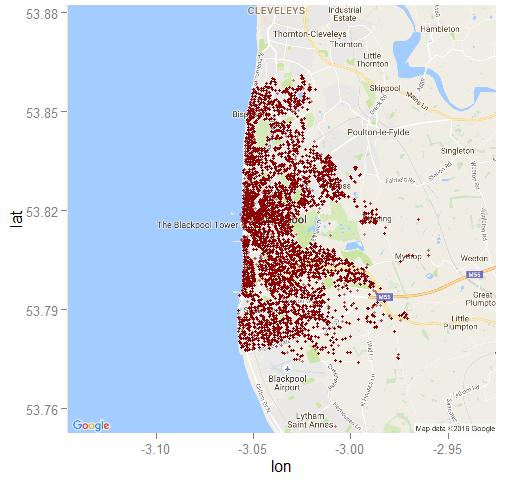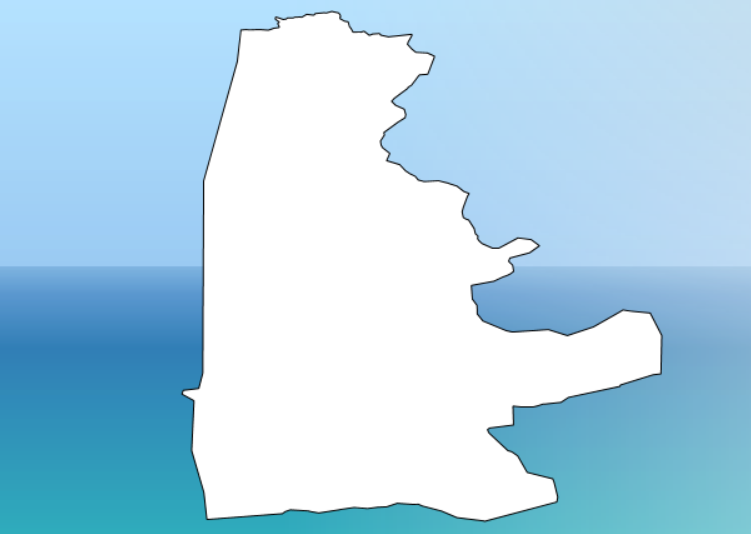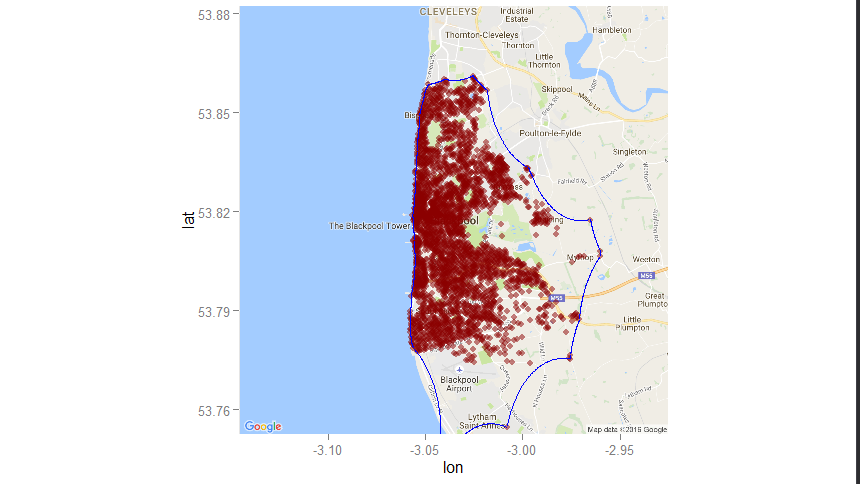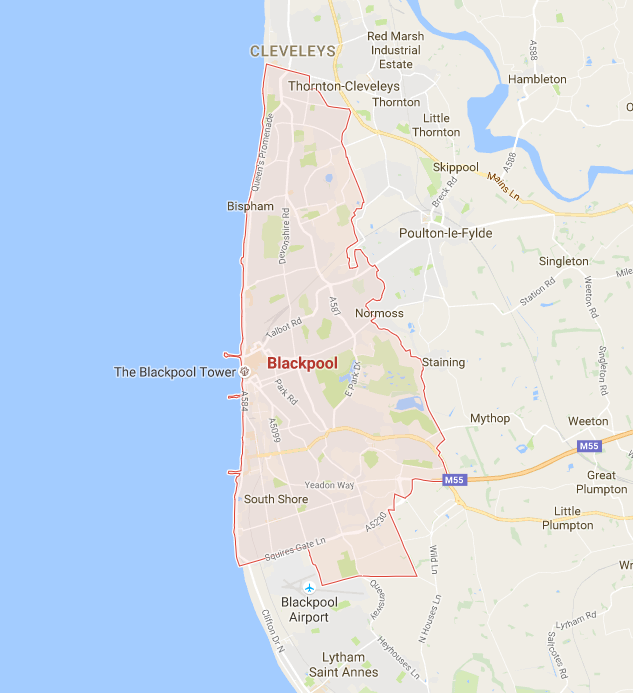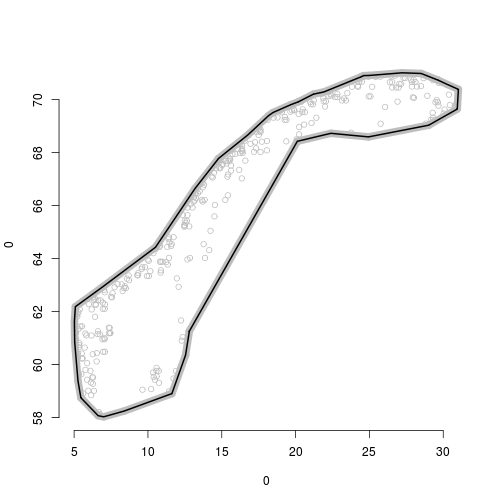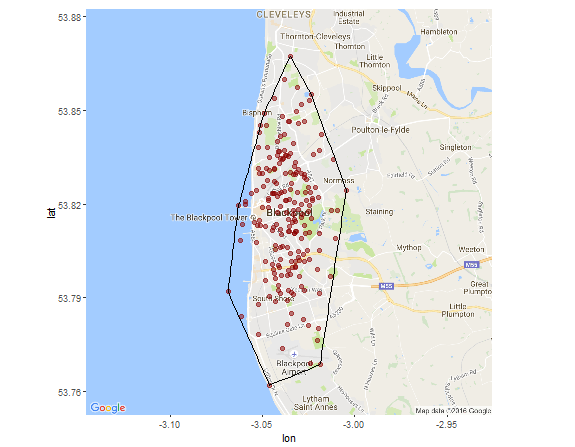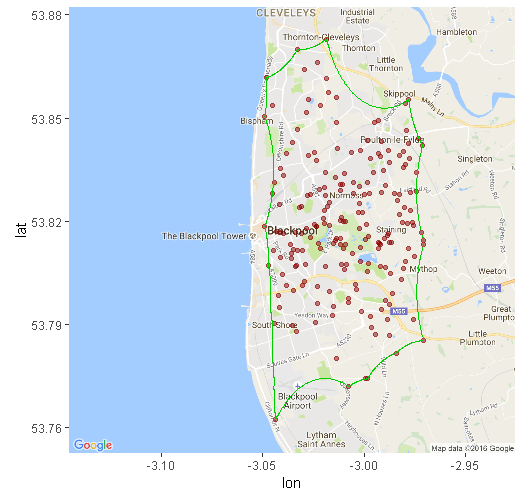I have a table containing all the latitudes and longitudes of some locations in a city called queryResult and I do the following:
1 - Get the Raster map of the city[Blackpool for instance]
cityMapRaster = get_map(location = 'Blackpool', zoom = 12, source = 'google', maptype = 'roadmap')
dataToShow <- ggmap(cityMapRaster) + geom_point(aes(x = Longitude, y = Latitude), data = queryResult, alpha = .5, color = "darkred", size = 1)
print(dataToShow)
and this will return the following points on the map
Now I want to draw the outer boundary [city border line] of all these latitude and longitudes similar to the following expected result
Update 1 : Providing input data and applying suggested ahull solution:
ggmap(cityMapRaster) + geom_point(aes(x = Longitude, y = Latitude), data = queryResult, alpha = .5, color = "darkred") + ahull.gg
I applied the ahull solution suggested by @spacedman and @cuttlefish44 and got the following result which is far different than the expected polygon:
You can download the .csv file containing all latitudes and longitudes from the following link : Blackpool Lat,Lon

